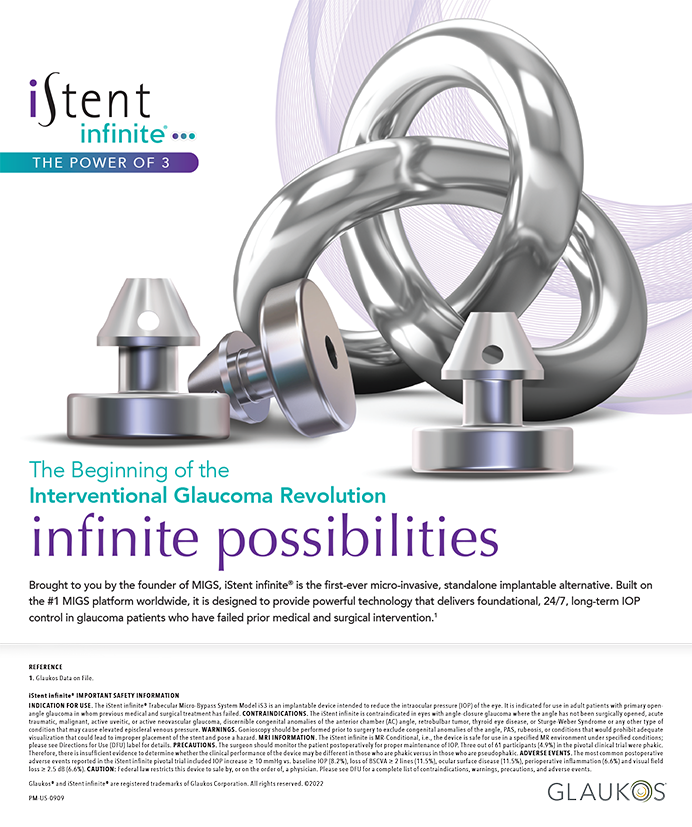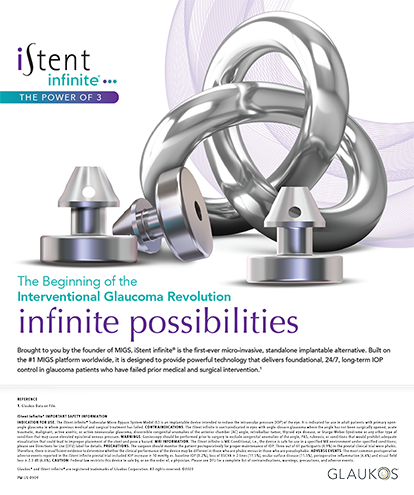Ophthalmologists in the United States are facing an unprecedented shift in demographics. As 2011 began, the oldest members of the baby boom generation turned 65 years old. On that day and for every day of the next 19 years, 10,000 baby boomers will reach that milestone. According to the Pew Research Center’s population projections, by 2030, when all of the baby boomers have reached the age of 65, 18% of the US population will be at least that age.1 The Archives of Ophthalmology has reported that the volume of cataract surgical procedures performed will grow by 3% annually.2
The statistics appear to represent a huge pool of potential patients suitable for new-technology IOLs. In the United States, however, the penetration rate for these advanced-technology implants is roughly 14%, according to David Harmon, founder and president of Market Scope, LLC (St. Louis, MO). That breaks down to about 6.5% for toric and 7.5% presbyopia-correcting lenses, he said in an interview with Cataract & Refractive Surgery Today.
THE ECONOMY AND MARKETING CHALLENGES?
The lack of adoption is due to a combination of factors, both economic and marketing related, Mr. Harmon said. “Economics are a challenge, and the majority of cataract patients are not able to afford an extra $4,000 per eye for presbyopia-correcting IOLs. Plus, many of these patients are accustomed to wearing glasses. If the practice is located in Beverly Hills or Long Island, however, then all of the patients can afford it.”
He added that, according to Market Scope’s surveys, about 25% of cataract surgeons do not offer either presbyopia- correcting or toric IOLs. “We have not surveyed as to why not, but I assume that it is a combination of lack of confidence in the technology and lack of interest/ skill in selling a premium service.”
Surgeon Steven J. Dell said that, despite some current flattening due to the economic recession, premium IOLs should be having a much greater effect on the market. In an e-mail to CRSToday, Dr. Dell wrote
I believe that one factor in this poor showing is surgeons’ failure to close the refractive loop. Just as refractive surgery did not experience exceptional market share until the advent of LASIK and its ‘wow’ factor, we refractive cataract surgeons need to focus on giving patients what they want. Patients do not enter our offices asking for a particular technology; they come in asking for freedom from spectacles at all distances and under all lighting conditions. Our job is to assess their situation, provide reasonable guidance on what can likely be achieved, and recommend the best option to meet as many of their goals as possible. Part of the refractive IOL surgery equation includes correcting residual refractive errors post-IOL surgery. If we can deliver glasses-free vision, we can satisfy our patients. Satisfied patients will refer their friends, and the refractive IOL category will continue to grow.
Dr. Dell is the director of refractive and corneal surgery for Texan Eye in Austin and chief medical editor of CRSToday’s sister publication ,Advanced Ocular Care.
THE ECONOMY AND THE TECHNOLOGY?
More than 7 years after presbyopia-correcting IOLs created a new category in cataract surgery, the conversation continues to be why these lenses are not penetrating the market at a higher rate. Shareef Mahdavi, president of SM2 Strategic in Pleasanton, California, said the culprits appear to be technology and the economy. As he has written in CRSToday, advances in technology will make tomorrow’s solutions better than what is available today.3
“Surgeons tend to want to wait for ‘perfect’ technology,” Mr. Mahdavi said in an interview. “Although newer lenses will always be in development, patients needing cataract surgery now want what is available today.” Mr. Mahdavi is the section editor of CRSToday’s “Premium Practice Today” column.
In terms of the economy, Mr. Mahdavi has a different perspective on that as well. SM2 Strategic fielded a survey of cataract patients to determine their awareness of and willingness to pay for premium lens implants. Results from 279 patients who completed an online survey indicate that awareness is low but that, once educated, interest is high. The majority of those who responded to the survey said they would like unaided vision for all distances. Nearly half (47%) reported a willingness to pay at least $1,000 more per eye for this outcome, and one-fourth said that “money is no object” when it comes to investing in improving their vision.4
“These data suggest there is a robust market segment for premium IOLs that is willing to pay once informed of the benefits,” Mr. Mahdavi wrote. “This segment is estimated at 20% to 30% of patients having cataract surgery, significantly higher than the current penetration being observed in the marketplace.”3
For surgeons, the survey’s results have two significant implications, according to Mr. Mahdavi. “First, they suggest that you should invest more time in educating your patients at the time of the doctor-patient visit, at the location of your referral sources, and in your communities,” he wrote. “Do not assume that the awareness among your staff has yet trickled down to your patient base. Second, the survey’s results indicate that this segment of consumers has a willingness to pay once they understand the perceived value and benefits of the premium IOL. Based on the survey data, a practice goal of 20% to 30% conversion to a premium IOL among current patients is reasonable.”3
CONCLUSION
As Mr. Mahdavi pointed out, not every patient is a candidate for a premium IOL. There is, however, a willingness among consumers who have been diagnosed with cataracts to learn about and take advantage of the new technology. “Achieving higher conversion rates is less dependent on the economy and the current technology and completely in the control of you, the surgeon, and your staff and how and when you communicate the benefits to your patients,” he wrote.3
Steven J. Dell, MD, may be reached at (512) 327-7000.
David Harmon may be reached at daveharmon@market-scope.com.
Shareef Mahdavi may be reached at (925) 425-9900; shareef@sm2strategic.com.
- Pew Research Center.The Data Bank.http://pewresearch.org/databank/dailynumber/?NumberID=1150.Accessed May 18,2011.
- Congdon N,Vingerling JR,Klein BE,et al,for The Eye Diseases Prevalence Research Group.Prevalence of cataract and pseudophakia/aphakia among adults in the United States.Arch Ophthalmol.2004;122(4):487-494.
- Mahdavi S.Incorporating premium IOLs into practice:no excuses.Cataract & Refractive Surgery Today.2009;9(3):67-68.
- Mahdavi S.A survey of consumer demand for premium cataract surgery.http://www.sm2strategic.com/files/2009%20Mar%20- %20Premium%20Channel%20-%20Consumer%20Survey%20by%20SM2.pdf.Accessed May 17,2011.


